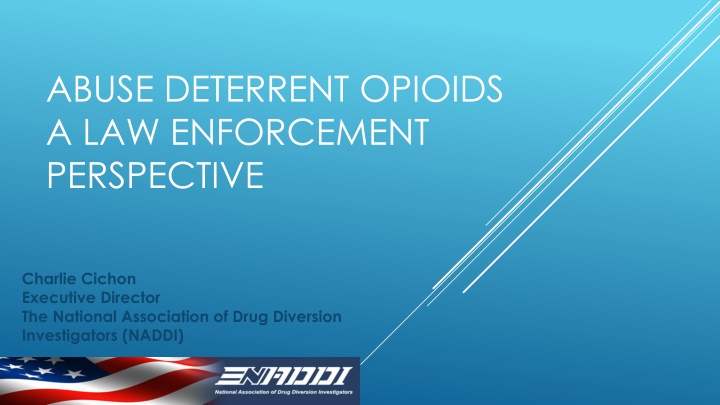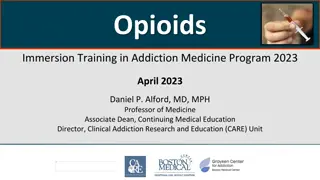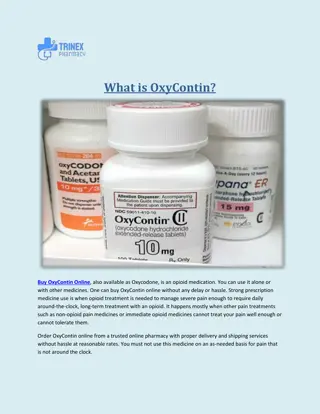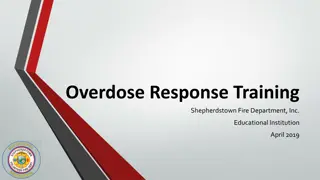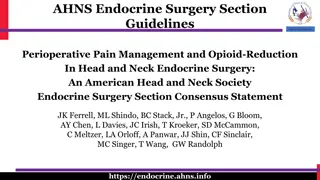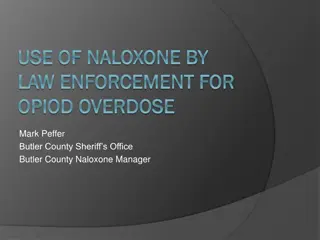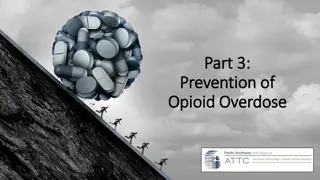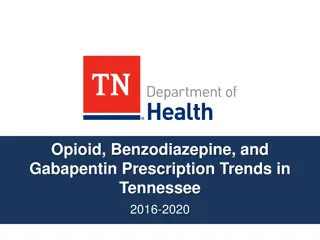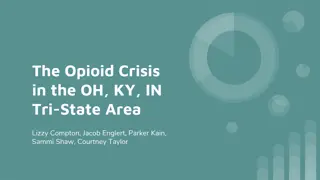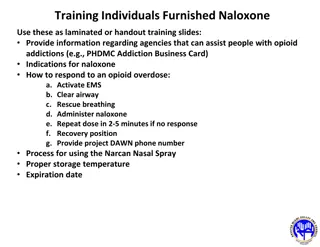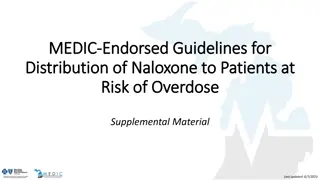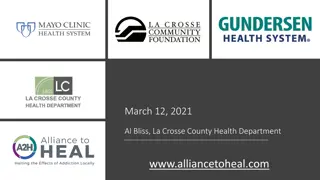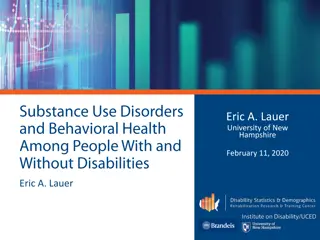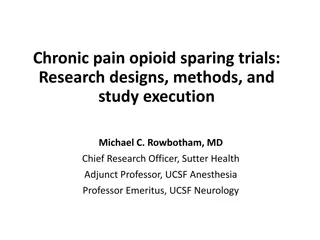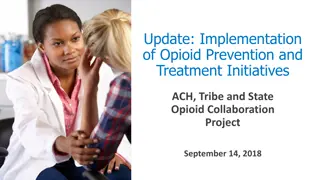Opioid Abuse Deterrent Strategies: Law Enforcement Insights
The National Association of Drug Diversion Investigators (NADDI) focuses on combating prescription drug diversion through advocacy, training, and collaboration with law enforcement. They address the misuse of opioids like OxyContin and Oxycodone, showing successes in reducing diversion and deaths in Florida. High Intensity Drug Trafficking Areas (HIDTA) play a key role in targeting drug trafficking regions. The data from Central Florida HIDTA reveals a significant decrease in OxyContin seizures. The efforts of law enforcement, such as the Pinellas County Sheriff's Office, in tracking and reducing illicit opioid purchases are highlighted.
Download Presentation

Please find below an Image/Link to download the presentation.
The content on the website is provided AS IS for your information and personal use only. It may not be sold, licensed, or shared on other websites without obtaining consent from the author.If you encounter any issues during the download, it is possible that the publisher has removed the file from their server.
You are allowed to download the files provided on this website for personal or commercial use, subject to the condition that they are used lawfully. All files are the property of their respective owners.
The content on the website is provided AS IS for your information and personal use only. It may not be sold, licensed, or shared on other websites without obtaining consent from the author.
E N D
Presentation Transcript
ABUSE DETERRENT OPIOIDS A LAW ENFORCEMENT PERSPECTIVE Charlie Cichon Executive Director The National Association of Drug Diversion Investigators (NADDI)
The National Association of Drug Diversion Investigators, or NADDI, is a non- profit membership organization that works to develop and implement solutions to the problem of prescription drug diversion. NADDI advocates for the responsible use of prescription drugs by people who need them, and at the same time, works with law enforcement and state regulatory agents to pursue those involved in related criminal activity. Our primary focus is training and education for our members, which include law enforcement personnel, regulatory agents, health professionals, health care fraud investigators, advocacy and treatment professionals and the pharmaceutical industry.
OxyContin vs. Oxycodone Some reports do not delineate the difference between OxyContin and Oxycodone. There is frequent misuse of the words OxyContin and Oxycodone by many as the names sound similar. OxyContin will always be Oxycodone; however Oxycodone will not always be OxyContin.
2010-2015 A substantial decrease in diverted OxyContin seizures and undercover purchases by Florida law enforcement 2010-2014 A significant decrease of Oxycodone cause of death in Florida
Population: Florida - 19,507,369 Pinellas County - 933,258 Pinellas County is the 2nd to the smallest county and is the most densely populated county in the State of Florida. Visitors exceed 14,000 daily and 5,300,000 annually.
HIDTA High Intensity Drug Trafficking Areas Created by Congress with the Anti-Drug Abuse Act of 1988, provides assistance to Federal, state, local, and tribal law enforcement agencies operating in areas determined to be critical drug-trafficking regions of the United States.
Central Florida HIDTA OxyContin Pills Seized 2010-2014 2010 49,673 2011 26,959 Florida PDMP went live 2012 1,070 2013 - 393 2014 127 99.6% Decrease in OxyContin Seizures
Pinellas County Sheriffs Office / OxyContin Pill Purchases 2010 134 2011 57 Florida PDMP went live 2012 -13 2013 60 2014 0 2010-2014 Oxycodone purchases were at an all time high
Florida Medical Examiners Commission Oxycodone Cause of Deaths 2010-2014 2010 715 2011 607 Florida PDMP went live 2012 392 2013 - 279 2014 -219 (June Interim Report)
2014 NADDI Members Survey Over 240 Responses Since the Reformulation of OxyContin in 2010 Prices have fallen significantly OxyContin is significantly less in demand
Pharmacy Robberies Rx Patrol Nationwide database Prior to the reformulation of OxyContin OxyContin was demanded in 66% of Robberies After the reformulation The demand dropped by almost 50%
Law enforcement have experienced a substantial decrease in seizures and undercover narcotics purchases of the OxyContin product during the last several years following the reformulation of this drug. There is no direct evidence to link the decrease of Oxycodone deaths to the reformulation of OxyContin however, the time frame correlates to when the product was reformulated in 2010.
Adding new physical and chemical features to prescription opioids to deter abuse could reduce misuse of these drugs and the sometimes deadly consequences. These products can be part of a comprehensive approach which should include prevention, interdiction, prosecution and substance-abuse treatment. While the first generation of abuse deterrent formulations have reduced diversion, any advances in this technology that would further erode the street value of opioids and maintain access to the individuals who benefit from their relief would be welcomed.
